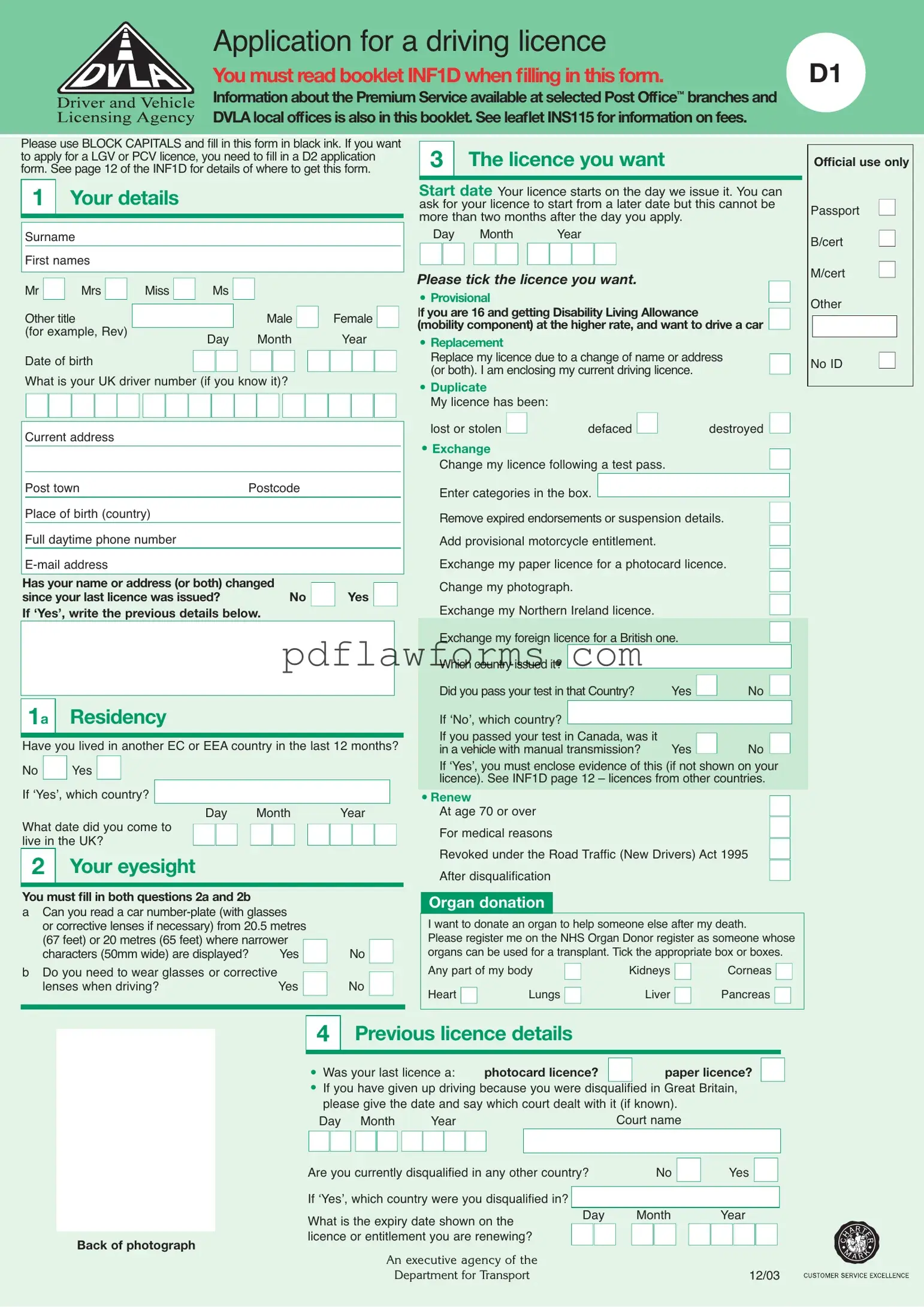Filling out the D1 DVLA form can be a straightforward process, but many people make common mistakes that can delay their application. Understanding these pitfalls can help ensure a smooth experience when applying for a driving licence.
One frequent error occurs when individuals fail to read the accompanying booklet, INF1D, before completing the form. This booklet contains essential information and guidelines that can clarify the requirements and help avoid mistakes. Ignoring it may lead to incomplete applications or misunderstandings about what is needed.
Another mistake is not using the correct format when filling out personal details. The form specifically instructs applicants to use BLOCK CAPITALS and black ink. Neglecting to follow these instructions can result in the form being rejected or returned for correction, which can delay the processing time.
Additionally, applicants often overlook the requirement to provide a valid UK driver number if they have one. This number is crucial for identifying the applicant's previous driving history. Leaving this field blank can lead to complications in verifying the application.
People also frequently misinterpret the questions regarding residency and health conditions. For instance, failing to disclose any changes in name or address since the last licence was issued can lead to legal issues. Similarly, not accurately reporting medical conditions that could affect driving ability may result in serious consequences, including the potential for fines or disqualification.
Another common oversight involves the signature on the photograph. The form requires that someone reliable sign the back of the photograph, confirming it is a true likeness of the applicant. If this person does not meet the criteria—such as having known the applicant for at least two years—this could lead to the application being rejected.
Lastly, many applicants forget to include the necessary identity documents or fail to provide the correct fee. Not including these items will result in the application being returned. Ensuring all required documents are enclosed and that the fee is accurate is vital for a timely processing of the application.
By being aware of these common mistakes, applicants can take the necessary steps to complete the D1 DVLA form accurately and efficiently. This proactive approach can save time and reduce frustration in the application process.
